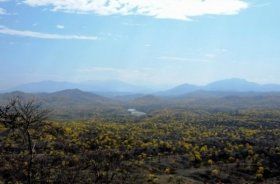A large proportion of Ecuador's rare dry forests are located in the southwest of the country, in the Tumbes-Chocó-Magdalena region. These forests provide not only wood and non-wood products, but also important ecosystem services that regulate the water balance and protect the soil from erosion. However, the area suffers a high loss of habitat due to deforestation for more arable and pasture land. This exacerbates the negative effects of climate change, such as temperature increases.
In cooperation with scientists from the Thünen-Institut and the Ecuadorian Universidad Técnica Particular de Loja, a team from TUM compared the predicted loss of area of tree species caused by deforestation on the one hand and by predicted forest losses in an extreme climate change scenario on the other. We have evaluated 660 data sets on the occurrence of 17 characteristic species of dry forests in the south of Ecuador," explain first author Carlos Manchego and Patrick Hildebrandt from the Chair of Silviculture at TUM - "in order to estimate both potential threats, we have compared the forecast annual rates of losses. However, it is important that the results are not transferable to other tree species in other regions."
Losses from conversions in the period 2008 to 2014, especially for agricultural and pasture land, averaged 71 square kilometres per year for all species in the study area. The predicted loss of species area in the climate change scenario was only 21 square kilometres per year.
Read more at Technical University of Munich (TUM)
Image: Most of Ecuador's dry forests are located in the southwest of the country, in the Tumbes-Chocó-Magdalena region. (Credit: Copyright P. Hildebrandt/ TUM)


